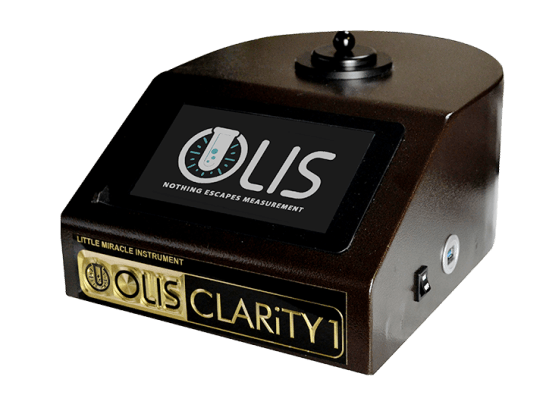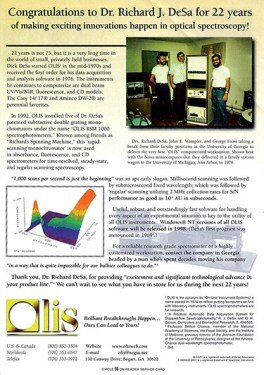Get This Report on Circularly Polarized Luminescence
Table of ContentsEverything about Circular DichroismA Biased View of SpectrophotometersExamine This Report on Circular DichroismAll About SpectrophotometersSpectrophotometers Can Be Fun For Anyone

Spectrophotometry is a tool that hinges on the quantitative analysis of molecules depending on how much light is soaked up by colored substances.
The 5-Second Trick For Circularly Polarized Luminescence
A spectrophotometer is frequently utilized for the measurement of transmittance or reflectance of services, transparent or nontransparent solids, such as refined glass, or gases. Numerous biochemicals are colored, as in, they take in visible light and for that reason can be measured by colorimetric procedures, even colorless biochemicals can often be transformed to colored substances appropriate for chromogenic color-forming reactions to yield substances appropriate for colorimetric analysis.: 65 However, they can likewise be developed to measure the diffusivity on any of the listed light ranges that usually cover around 2002500 nm using various controls and calibrations.
An example of an experiment in which spectrophotometry is used is the decision of the equilibrium constant of a solution. A particular chemical reaction within a solution may happen in a forward and reverse direction, where reactants form items and products break down into reactants. At some time, this chain reaction will reach a point of balance called an equilibrium point.
All about Uv/vis/nir
The quantity of light that passes through the option is a sign of the concentration of particular chemicals that do not enable light to go through. The absorption of light is due to the interaction of light with the electronic and vibrational modes of molecules. Each type of particle has an individual set of energy levels connected with the makeup of its chemical bonds and nuclei and thus will soak up light of specific wavelengths, or energies, leading to unique spectral properties.
They are widely utilized in many markets consisting of semiconductors, laser and optical production, printing and forensic examination, as well as in labs for the research study of image source chemical compounds. Spectrophotometry is typically used in measurements of enzyme activities, determinations of protein concentrations, decisions of enzymatic kinetic constants, and measurements of ligand binding reactions.: 65 Ultimately, a spectrophotometer is able to figure out, depending on the control or calibration, what substances are present in a target and precisely how much through calculations of observed wavelengths.
This would come as a solution to the previously developed spectrophotometers which were unable to soak up the ultraviolet properly.
The Best Strategy To Use For Circular Dichroism
It would be discovered that this did not give satisfactory outcomes, for that reason in Model B, there was a shift from a glass to a quartz prism which enabled much better absorbance outcomes - circularly polarized luminescence (https://urlscan.io/result/3823bc3a-74b6-4d0f-8f09-522e983b4d26/). From there, Design C was born with a change to the wavelength resolution which ended up having 3 systems of it produced
It irradiates the sample with polychromatic light which the sample soaks up depending on its properties. It is transmitted back by grating the photodiode selection which discovers the wavelength region of the spectrum. Since then, the production and application of spectrophotometry devices has actually increased profoundly and has actually turned into one of the most ingenious instruments of our time.

Examine This Report on Uv/vis/nir
Historically, spectrophotometers utilize a monochromator consisting of a diffraction grating to produce the analytical spectrum. The grating can either be movable or fixed. If a single detector, such as a photomultiplier tube or photodiode is utilized, the grating can be scanned stepwise (scanning spectrophotometer) so that the detector can determine the light strength at each wavelength (which will represent each "action").
In such systems, the grating is repaired and the strength of each wavelength of light is measured by a different detector in the selection. When making transmission measurements, the spectrophotometer quantitatively compares the fraction of light that passes through a reference service and a test service, then digitally compares the strengths of the two signals and computes the portion of transmission of the sample compared to the referral standard.
